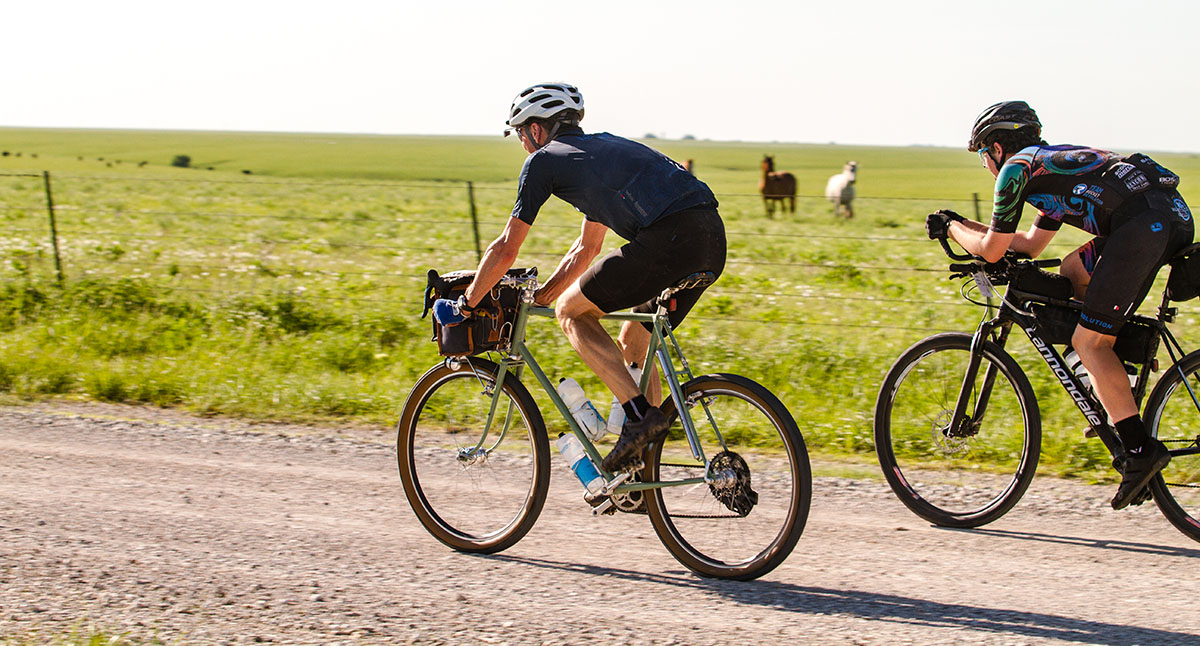Aerodynamics of Gravel Bikes
Aerodynamics are an important factor in gravel racing and riding. Gravel racing speeds are high—the fastest riders in the 200-mile Unbound average 20 mph (32 km/h) across the Flint Hills of Kansas. And many gravel races can be extremely windy. Optimizing the aerodynamics of a gravel bike is important, yet much of the science remains poorly understood.
If you’ve just discovered this post via a Google search and are unfamiliar with Rene Herse Cycles, what follows may sound like pure madness. It’s not what you usually read on cycling websites… We are used to that, ever since our first tire tests—15 years ago—showed that wide tires can roll as fast as narrow ones. That was also pure madness—back then! Today wide high-performance tires have become accepted by almost everybody.
What you read below is based on scientific studies (including two days in the wind tunnel of the University of Washington Department of Aeronautics). It’s also proven itself on the (gravel) road. A sister bike of the one featured holds the FKT (Fastest Known Time) on the 364-mile Oregon Outback (below). And two of these bikes have completed the 350-mile Unbound XL across the Flint Hills of Kansas in just over 25 hours, placing well in a field of the world’s fastest long-distance gravel racers.
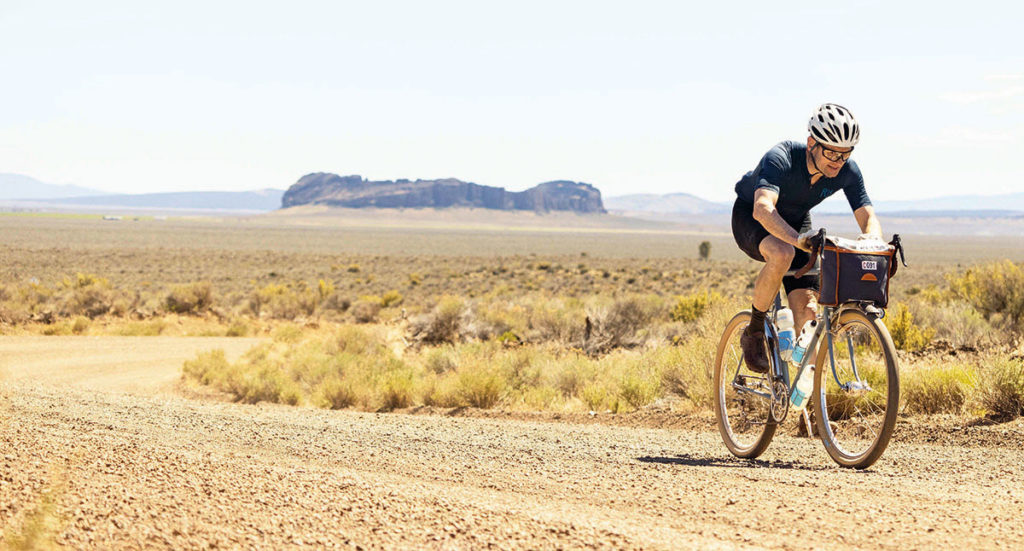
Aero Wheels
When we think about making our bikes more aerodynamic, we usually think about aero wheels first. And there’s no doubt that aero wheels can provide small, but significant, benefits—on a racing bike. For gravel bikes with wide tires, things get more complicated. An aerodynamic teardrop shape has a ratio (length to width) of 3 : 1.
That applies if the shape is in ‘free air.’ If it’s surrounded by other parts that create turbulence (fork blades, spokes, etc.), that ratio is higher, more like 5 : 1. With 25 mm tires, the 3:1 ratio works out to a 50 mm-deep rim (25 mm tire + 50 mm rim = 75 mm). However, the trailing end of the rim should be rounded a little—a knife edge would be too dangerous, and cross-wind performance will be better with a rounded shape, too. So you get a minimum depth of 45 mm for an aero rim for 25 mm tires. Not coincidentally, the smallest aero rims measure 45 mm deep. According to the manufacturers, they offer ‘medium’ aero performance. If you want to go really fast, you’ll need 80-85 mm-deep rims, which offer a ratio of 4.5 : 1 once you include the tire.
To keep the flow laminar (meaning no turbulence occurs along the surface), you also need a rim that’s as wide as the tire. That is why aero wheels for 25 mm tires measure about 25 mm wide (outside).
Once you go to a 42 mm tire, it’s easy to do the math. You’ll want a rim that’s 42 mm wide and about 75-80 mm deep. For the 54 mm tires I ran in the Oregon Outback, aero rims would be 54 mm wide and 100 mm deep. Real-world rims aren’t that wide and deep—most gravel-specific rims measure about 30 mm wide and 45 mm deep. Why don’t people run 80 mm-deep rims on gravel? Deep rims are difficult to control in crosswinds. (About 60% of the front wheel is in front of the steerer axis and only 40% behind, so a crosswind tends to turn the handlebars.) The taller your rim, the stronger is the force of the crosswind turning your handlebars.
Isn’t a 45 mm-deep rim at least better than a classic box rim? Not necessarily: With aerodynamics, ‘almost aero’ often is worse than not aero at all. If you can’t get laminar flow, it’s often best to have the airflow completely break free of the object. That’s why many cars—wagons and SUVs especially—have a spoiler at the trailing edge of the roof. This is also the reason why many early ‘streamlined’ cars were actually not very aero. (The original VW Beetle had a drag coefficient of 0.48, worse than many ‘boxy’ cars of the 1950s.)
There are wind tunnel tests that purport to show that aero wheels provide advantages even with wide tires (Specialized, Hunt). However, these tests show very small gains of <1%. In addition, some tests include only the bike, without a rider (Hunt). The rider’s spinning legs cause turbulence that will affect the airflow around the bike, so the actual benefits will be even smaller in the real world. If anything, these wind tunnel tests confirm that aero wheels don’t significantly improve aerodynamics on a gravel bike. When I discussed this post with the chief development engineer of a well-known American wheel maker, he confirmed: “It’s difficult to envision aero wheels that provide advantages for tires wider than 32 – 35 mm.”
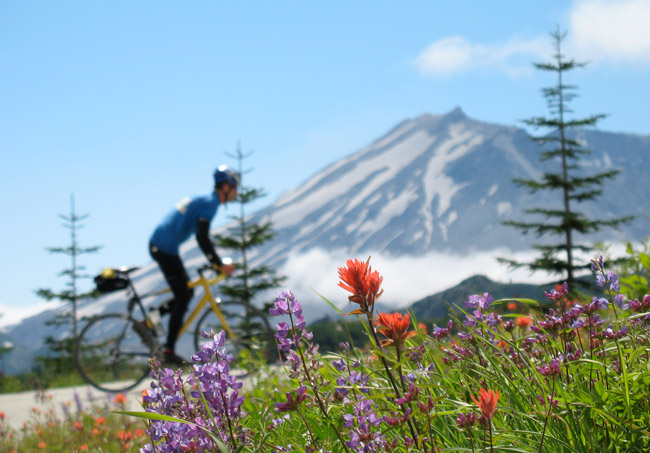
If you want aero wheels and your gravel is smooth, you could run 25 mm tires on 45 mm-deep rims. But the benefit of aero wheels isn’t big enough for the trade-offs. You’d give up way more speed from the vibrations caused by the narrow tires than you’d gain from the aero benefits. (Even for road bikes, aero wheels reduce the wind resistance of rider and bike by only 2-3%).
Gravel wheels use aero-shaped rims for a different reason: The rim shape makes for a stronger wheel. And that in turn makes it possible to build a strong wheel with fewer spokes—which does make it more aero.
Tire Width
After aero wheels, the next advice is usually to run the narrowest tire you can get away with. Intuitively that makes sense: Narrower tires will be more aero. However, this effect is too small to be noticeable: The increase in the bike’s frontal area is small, especially since most modern bikes have down tubes that are wider than even the widest gravel tires.
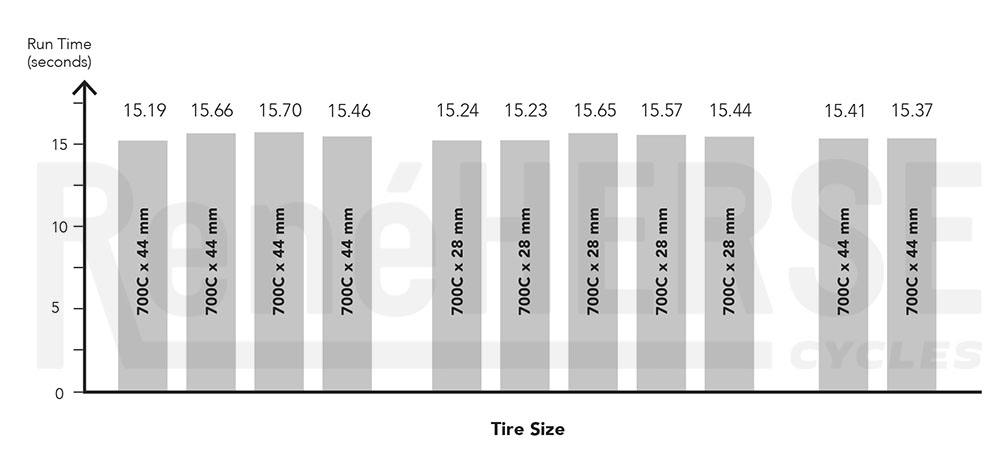
Roll-down tests confirm this. Above you see high-speed runs with 44 mm and 28 mm Rene Herse tires on a day with zero wind. The averages for both are within 0.1 seconds of each other—44s and 28s roll at the same speed.
Tire Tread
In theory, slick tires should be more aero than knobbies. That’s one reason why top racers like Ted King, Lauren de Crescenzo, or Brennan Wertz often race on Rene Herse all-road tires with minimal tread. (Knobs help with traction in mud, snow and whenever they can dig into a relatively firm surface. On loose gravel, rocks slide on other rocks, and tread makes little or no difference.)
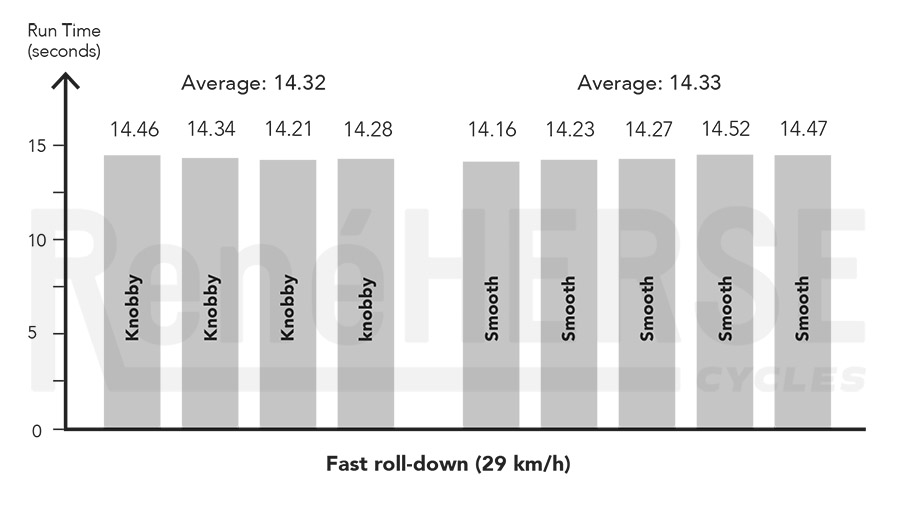
The aero advantage of smooth tires appears to be small—too small to measure. Above are roll-down tests comparing Rene Herse 700×42 mm knobbies (Hurricane Ridge) with our 700×44 mm smooth all-road tires (Snoqualmie Pass). Their speeds are the same. If you are trying to eke out every last bit of performance, smooth tires probably help. For the rest of us, there’s no reason to worry about tire tread.
Bladed Spokes
Even if aero rims don’t provide a speed benefit with wide tires, shouldn’t we at least run bladed spokes? The answer depends on whether there are crosswinds. Here’s the issue: Gravel races and rides are often longer than road races, and the terrain is rougher. Speeds are lower. And that means that crosswinds have a greater effect.

For a pro racer in a time trial, at a speed of 50 km/h (31 mph), even a 10 km/h sidewind changes the resultant wind direction only by 11 degrees (left). A top-level gravel racer has the air coming at 17° (center), while a mere mortal will be battling a 25° crosswind (right).
A typical bladed spoke is 1.0 mm thick and 2.2 mm wide. It’s still too short to get laminar airflow (remember the 3:1 ratio), but at least it’s thinner than even the thinnest round spoke—if the wind is coming from the straight-ahead. The greater the angle of the airflow, the worse the bladed spoke gets, until it’s probably significantly worse than a thin round spoke. (We haven’t tested this, so this part is just a hypothesis.) My Rene Herse bike runs round spokes (Sapim Laser) that measure 1.5 mm over most of their length. These thin round spokes appear to have a more consistent aero performance over a wide variety of conditions than bladed spokes. In fact, Campagnolo seems to agree: The Italian company’s brand-new Levante gravel wheelset uses round spokes.
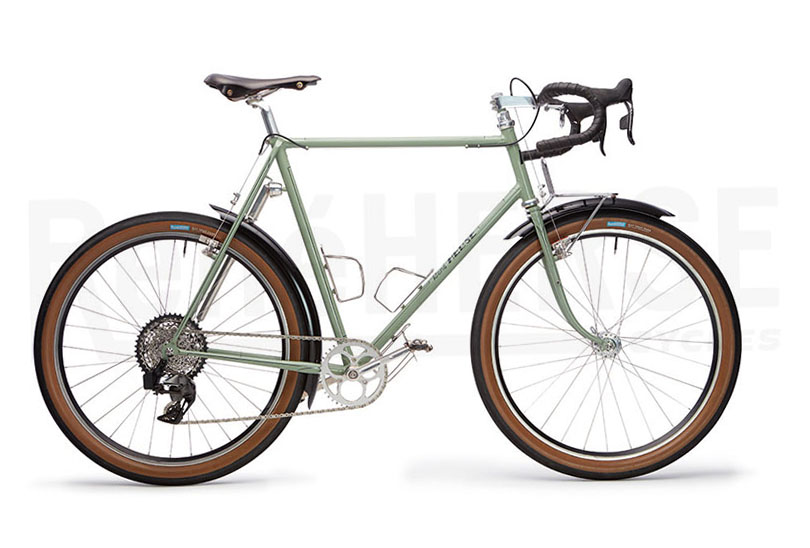
Wheel Fairings
At gravel speeds and with gravel tire widths, aero wheels and bladed spokes don’t make much sense, but we can improve the wheels’ aerodynamics in other ways. The top of the tire moves at twice the speed of the bike. (The bottom grips the road surface, so it doesn’t move at all relative to the ground.) Let’s say you descend at 36 mph (58 km/h)—the maximum I reached on the gravel of Unbound XL this year. At the top of your tires, the tread slices through the air at 72 mph (116 km/h). Wind resistance goes up with the square of speed, so tire treads at 72 mph have four times as much wind resistance as they would at 36 mph.
That’s where the Rene Herse’s fender fairings come in. (They may look like shortened fenders, but they are not intended to keep the rider dry.) By shielding the tops of the tires from the airstream, they reduce the wind resistance. Now the airstream is hitting the fender fairing—which moves at 36 mph—rather than the tire at 72 mph. We optimized the shape of these fender fairings in the wind tunnel, until they decreased air resistance by 1-2%—almost as much as a set of aero wheels on a racing bike. In road racing, fairings are illegal, but these rules don’t apply to most gravel races.
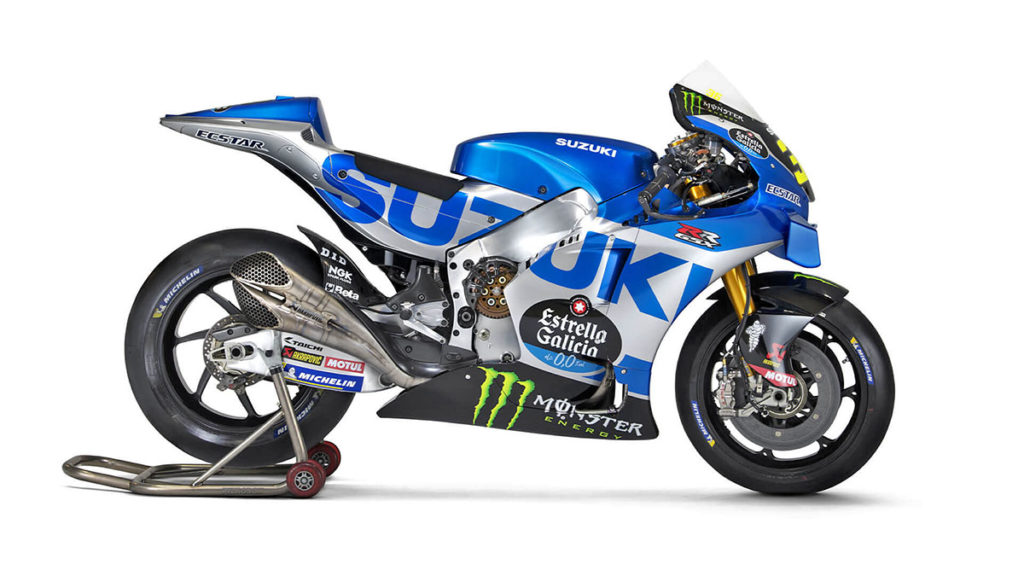
If you have doubts about the aerodynamic benefits of fenders, look at a Moto GP bike. The 2022 Suzuki above has fenders shielding the tops of the tires. The coverage of the Suzuki’s and the Rene Herse’s fenders is almost exactly the same, if you factor in the effect of the fairing at the bottom of the motorbike’s rear wheel. (It’s nice to see that our wind tunnel tests and those of a well-funded Moto GP team show the same results.) Do these fender fairings really provide a benefit? Moto GP teams spend a huge amount of time in the wind tunnel, and they wouldn’t add parts to their bikes that don’t provide measurable benefits.
Rider Position
The biggest part of a bike’s wind resistance is caused by the rider. Unfortunately, there isn’t much you can do with respect to the airflow around bike and rider. There are too many exposed elements to keep the airflow attached and flowing smoothly. When the air detaches, it becomes turbulent, which greatly increases drag. That’s also why aero frame tubes may work in the wind tunnel (without a rider), but once the rider’s legs are spinning right next to them, the turbulent airflow no longer sees much benefit from the shaped tubes.
One thing to avoid is clothing that flaps in wind. The turbulences that cause the clothes to move cost a lot of energy. Most riders wear tight-fitting jerseys and shorts, but rain jackets and windbreakers can vary greatly in their aerodynamic efficiency.
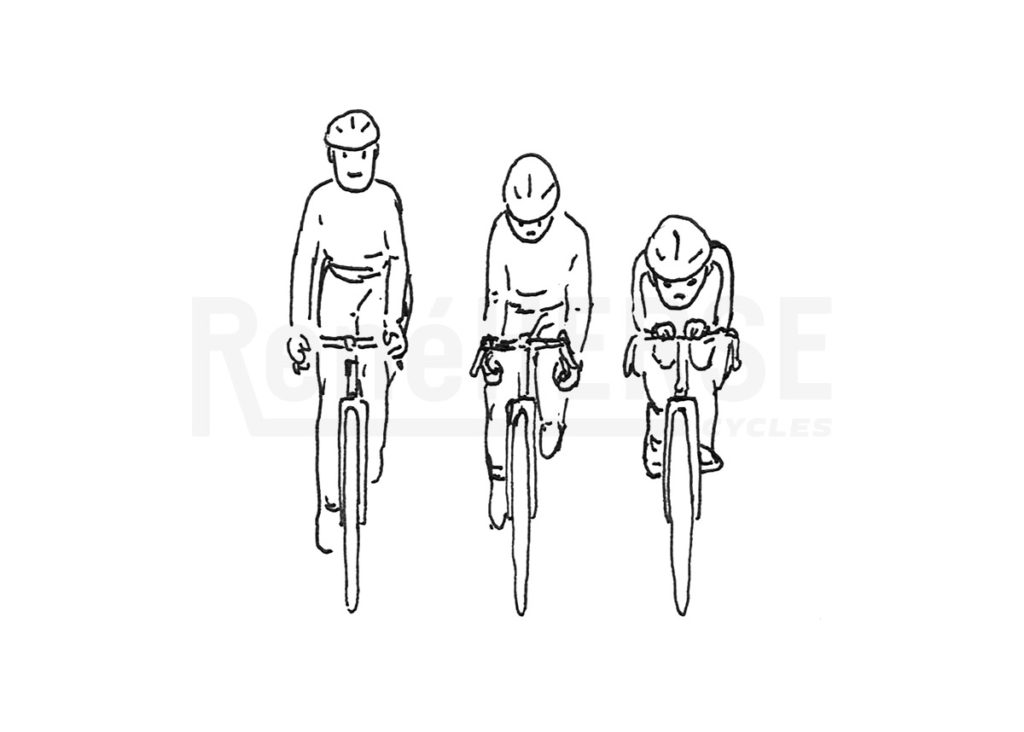
The best way to make the bike-and-rider more aero is to make it smaller. And that’s very significant: Half the size means half the aerodynamic drag. What matters is the frontal area (above; the drawings are based on projections of the same rider in different positions).
The most obvious way to decrease the frontal area is a more inclined riding position. Many gravel bikes have relatively upright positions (left), which increase the rider’s frontal area by quite a bit. A low, stretched-out position (middle) makes a racing bike fast, and there’s no reason why you shouldn’t use the same position on your gravel bike.
Of course, your riding position must match your power output. Contorting yourself into a low crouch without having the leg power to hold up your upper body doesn’t help: You’d be faster in a more comfortable position where you can put out more power. That’s also why you’ll want a more upright position if your gravel rides are longer than your road rides.
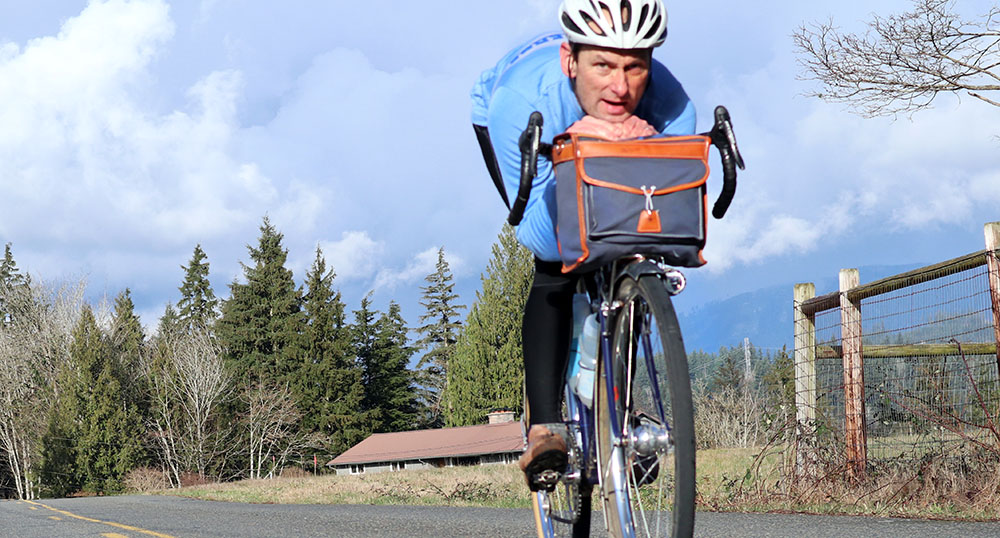
On downhills, it’s often more efficient to crouch in the aero tuck than to pedal. Our wind tunnel tests show that the aero tuck decreases wind resistance by more than 30%. At high speeds, not even a pro racers can put out enough power to overcome that. Better to coast, rest your legs and still be faster!
When you use the aero tuck on a rolling course, you’re not only faster on the downhills, but you also coast longer after the hill ends. Imagine a secret trick to make each downhill last a few hundred feet longer—that’s what the aero tuck does.
On mountain descents, I don’t always use the aero tuck. I find that it’s not comfortable for more than a few minutes at a time. I do use it toward the bottom of the descent, to carry my speed further into the flat (or uphill) stretch that follows.
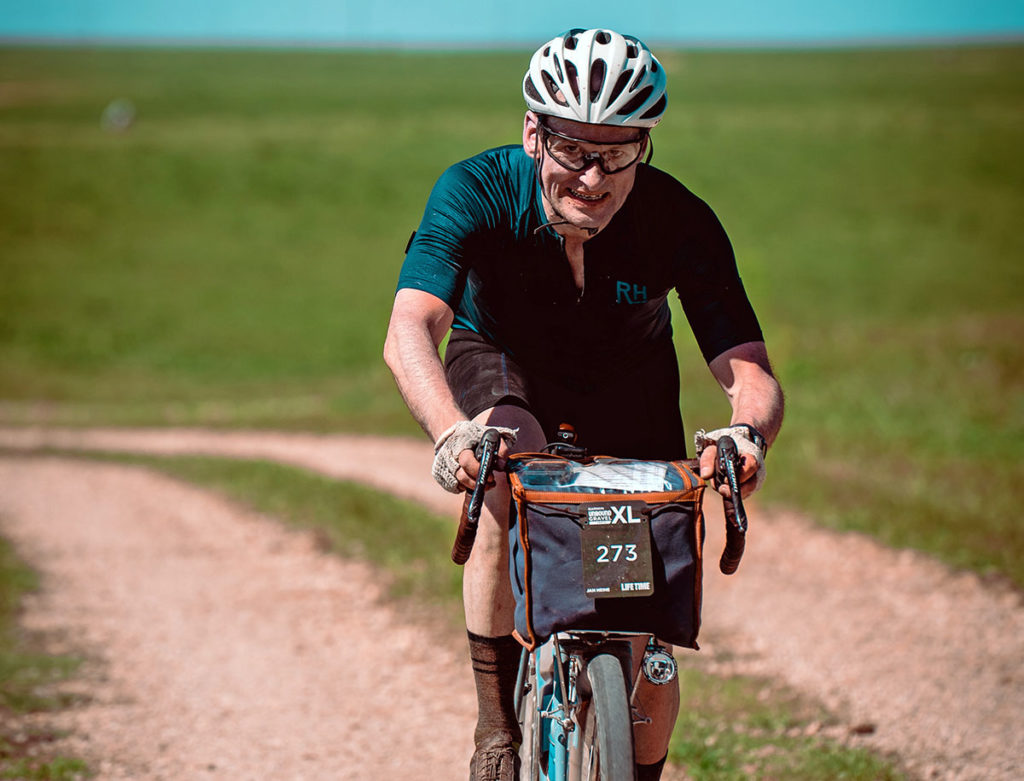
Handlebar Width
There’s another way you can decrease your frontal area—without affecting comfort: Get narrower instead of lower. Many ‘gravel’ handlebars are very wide. They take their inspiration from mountain bikes, where sharp turns at low speed require leverage over the steering. On gravel, speeds are higher, and handlebar movements are smaller. You don’t need wide bars to control a gravel bike.
The Rene Herse runs 40 cm-wide handlebars—chosen because of the vicious headwinds in the Flint Hills of Kansas. The narrow bars make the bike significantly more aero. (In the wind tunnel, we found that lowering the bars by 2 cm reduced wind resistance by 5%. Our on-the-road experience suggests that 2 cm narrower bars have a similar effect.) If you ride with bend elbows—which also helps with shock absorption—your arms articulate inward, and narrow bars don’t affect your breathing or comfort. (If you ride with your elbows locked, you’ll find wider bars more comfortable.)
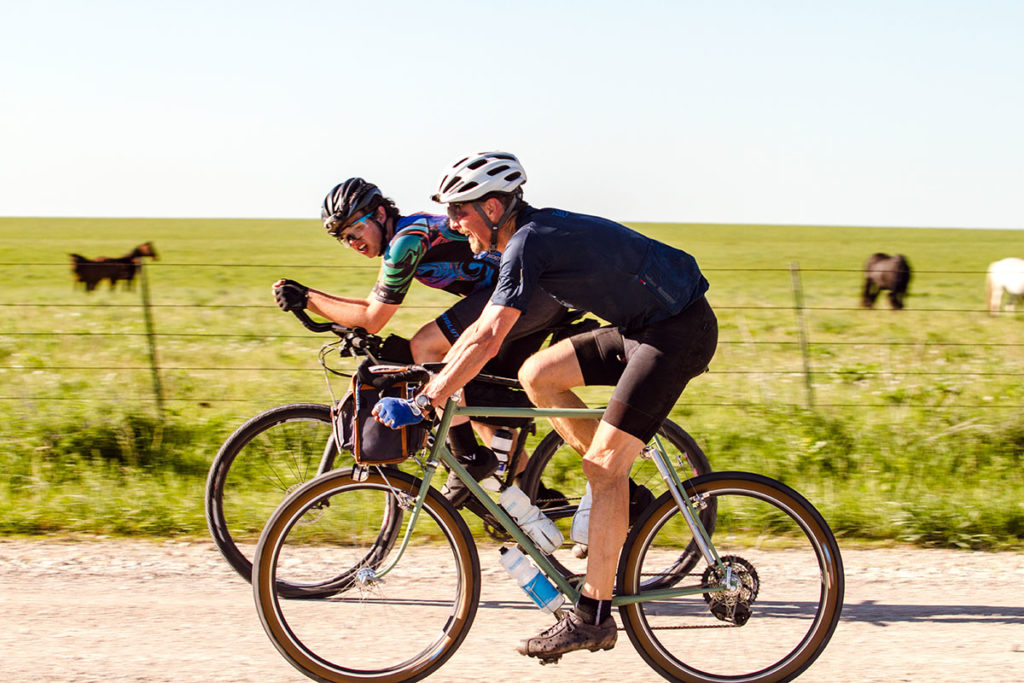
Aerobars
Aerobars are an obvious way to make the rider both lower and narrower. If the rider’s arms are pulled inward until they almost touch, aerobars are incredibly effective. Not only do they decrease the frontal area, but they also close off the cavity under the rider’s chest. There’s a drawback: Most riders find it uncomfortable to ride in that position. Set more widely, aerobars offer very little benefit.
Another issue with aerobars is comfort: Some riders find aerobars offer relief for their wrists (which can hurt if your ‘main’ handlebars aren’t shaped to support your hands). For me, resting my elbows on the pads isn’t very comfortable, as it eliminates the suspension that my elbows provide on rough terrain.
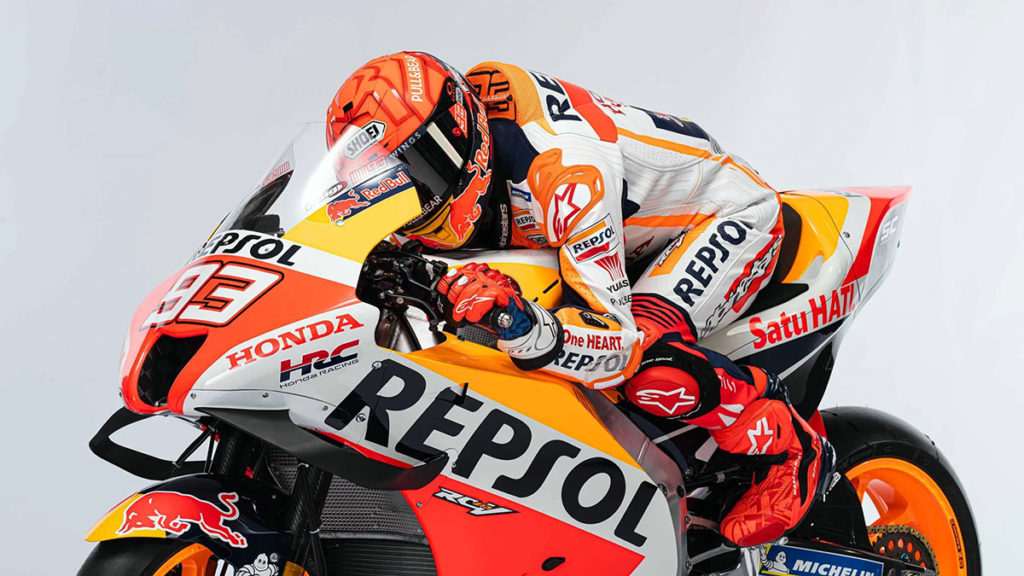
Fairings
Moto GP bikes use fairings to make the rider more aero. Why can’t we do that on a bicycle? Fairings work only if they almost touch the rider. Cyclists change riding positions too much for fairings to work.
The Moto GP Honda above shows how much thought goes into the aerodynamics of these machines. The hunchback that’s part of the Moto GP rider suit prevents airflow separation at the back of the helmet. I suspect we’d get hot if we included that in a cycling jersey, though! The wings at the front of the fairing provide downforce to keep the front wheel on the ground during acceleration. Bikes are too slow to create meaningful downforce that way.
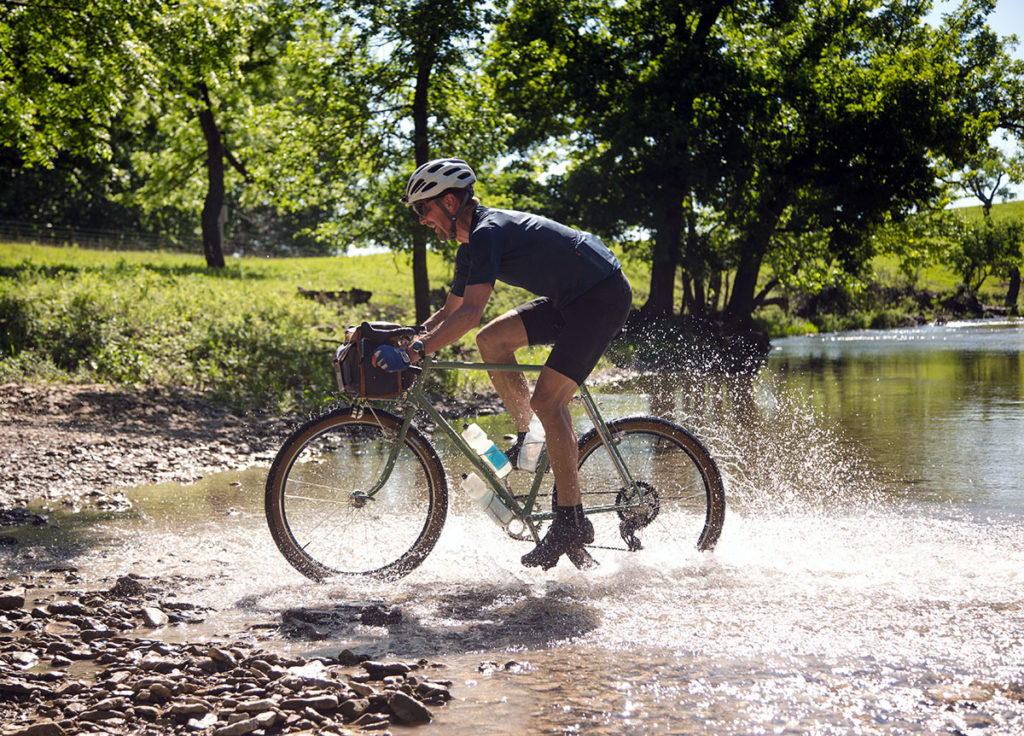
Speaking of fairings, the handlebar bag on the Rene Herse seems to provide a very small aero benefit. I suspect that the bag shields the spinning legs from the airstream. The shape of the bag is essential here: The same bag with side pockets increases wind resistance. (We measured that in the wind tunnel.) The bag is even more effective in the aero tuck, where my body is close enough that it actually works like a fairing. However, the effect is small: These bikes use a handlebar bag because it allows access to food and clothing while riding… (Some readers have suggested that the boxy shape of the bag could be improved. However, since the bag sits between the handlebars, a rounded shape was actually less aero when we tested it in the wind tunnel.)
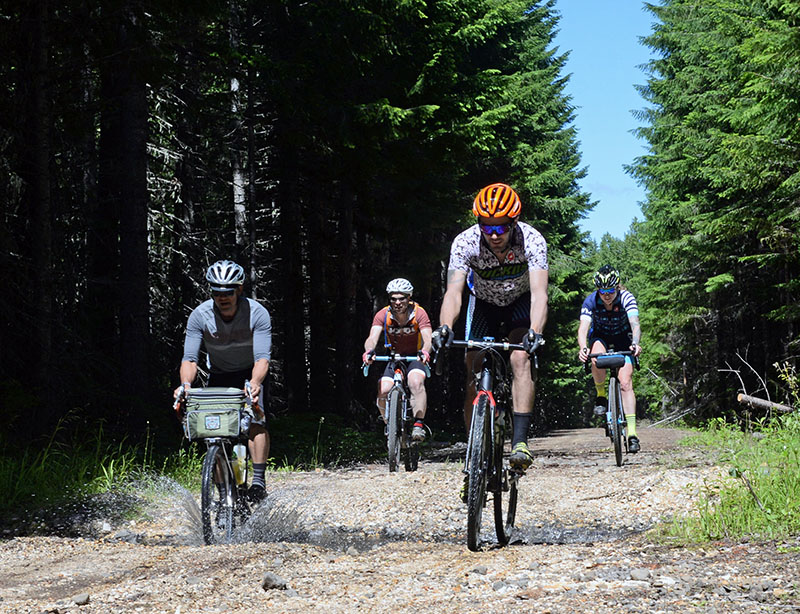
With gravel bikes even more than with racing bikes, thinking outside the box can make your bike significantly more aero. You don’t need to mount tire fairings on your bike, but things like reducing the width of your handlebars or adopting a more race-oriented position can have a significant effect, especially over the course of an all-day ride or race.
Photo credits: Linda Guerrette (Photo 1, 7, 8, 10); Rugile Kaladyte (Photo 2); Suzuki (Photo 5); Honda (Photo 9)
Further reading:
- Oregon Outback Rene Herse: Method or Madness?
- The science of how to make bicycles faster, more comfortable and more reliable is summarized in our book The All-Road Bike Revolution.
- The results of our wind tunnel tests were published in Bicycle Quarterly 21 and 23.
- Interested in wheel fairings? I made mine by cutting down a set of our Rene Herse fenders.


